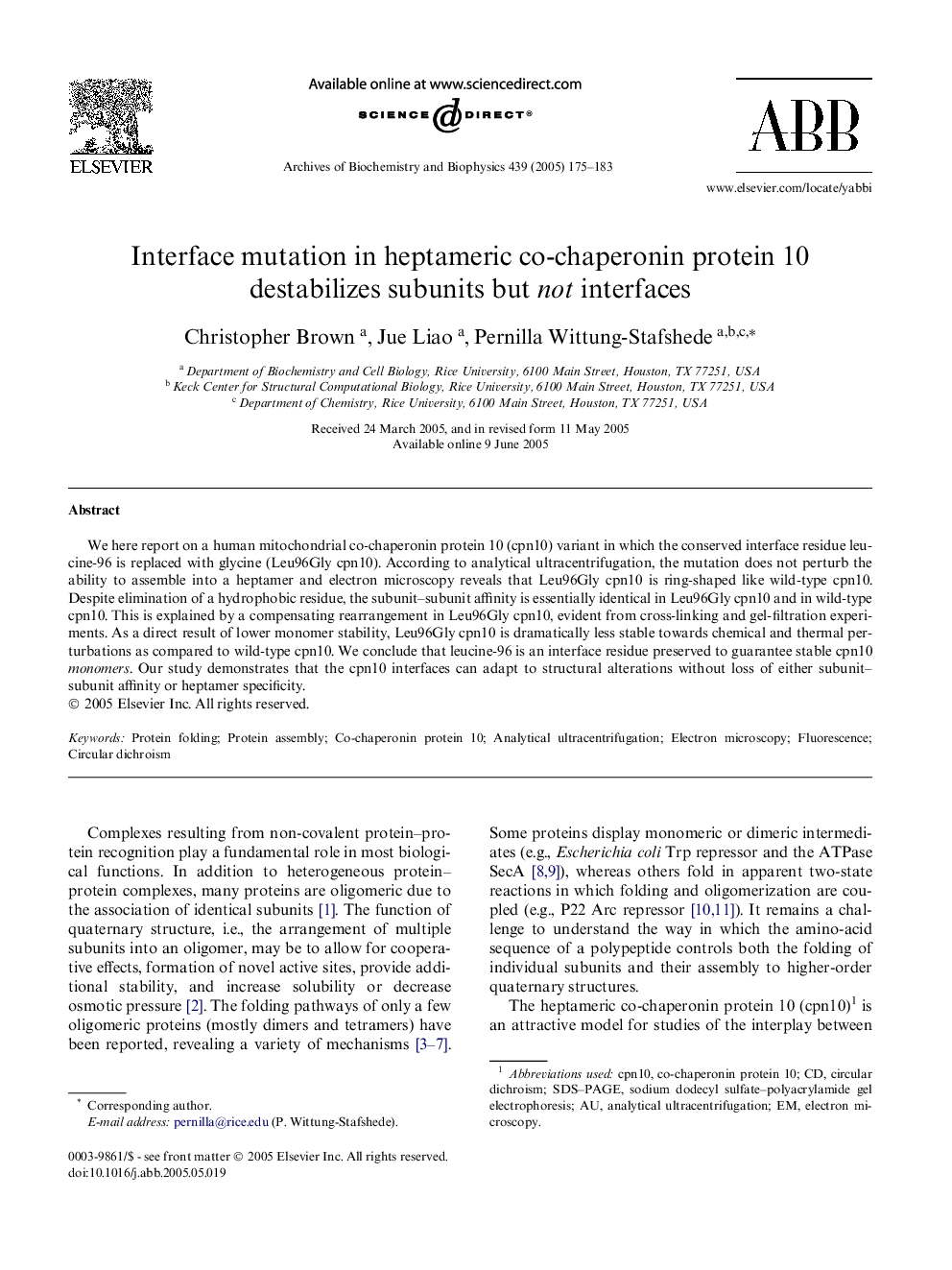| Article ID | Journal | Published Year | Pages | File Type |
|---|---|---|---|---|
| 9882165 | Archives of Biochemistry and Biophysics | 2005 | 9 Pages |
Abstract
We here report on a human mitochondrial co-chaperonin protein 10 (cpn10) variant in which the conserved interface residue leucine-96 is replaced with glycine (Leu96Gly cpn10). According to analytical ultracentrifugation, the mutation does not perturb the ability to assemble into a heptamer and electron microscopy reveals that Leu96Gly cpn10 is ring-shaped like wild-type cpn10. Despite elimination of a hydrophobic residue, the subunit-subunit affinity is essentially identical in Leu96Gly cpn10 and in wild-type cpn10. This is explained by a compensating rearrangement in Leu96Gly cpn10, evident from cross-linking and gel-filtration experiments. As a direct result of lower monomer stability, Leu96Gly cpn10 is dramatically less stable towards chemical and thermal perturbations as compared to wild-type cpn10. We conclude that leucine-96 is an interface residue preserved to guarantee stable cpn10 monomers. Our study demonstrates that the cpn10 interfaces can adapt to structural alterations without loss of either subunit-subunit affinity or heptamer specificity.
Keywords
Related Topics
Life Sciences
Biochemistry, Genetics and Molecular Biology
Biochemistry
Authors
Christopher Brown, Jue Liao, Pernilla Wittung-Stafshede,
